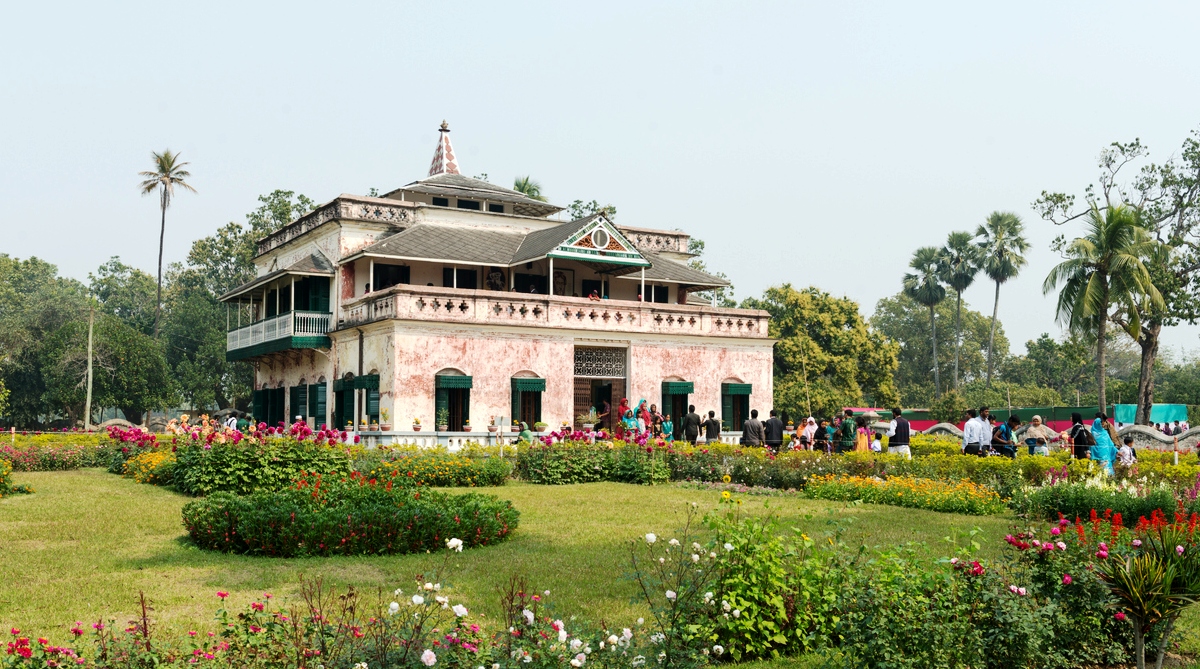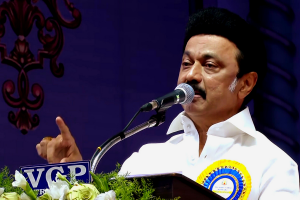During his visit to Tokyo in 1925, Tagore remarked that at Santiniketan he wished to create ‘an atmosphere of culture’ that would offer ‘something impalpable but life-giving’. Visva-Bharati was not meant to be one of those educational institutions that focused exclusively on conventional ‘academic’ disciplines and pedagogic procedures like classroom teaching. Music, dance and the fine arts were an integral part of the everyday life of the institution and the community.
The emphasis on cultivating an aesthetic sensibility was closely linked to the poet’s critique of conventional education that prioritized materialistic and selfish desires over happiness and freedom. In the essay What is Art? (1917) Tagore wrote: ‘Man has a fund of emotional energy which is not all occupied with his self-preservation. This surplus seeks its outlet in the creation of Art…’
Advertisement
Kala Bhavana, Visva-Bharati’s famous art school, started functioning towards the end of the second decade of the century. Nandalal Bose, Asit Kumar Haldar and Surendranath Kar, the distinguished young artists who taught at Kala-Bhavana during its initial years, had been trained by Abanindranath Tagore, Rabindranath’s artist nephew. Under Nandalal’s dynamic stewardship Kala Bhavana soon established itself as modern India’s foremost art institution and began to articulate a distinctive aesthetic vision.
One of the tasks Kala Bhavana undertook was that of reviving and reinventing traditional indigenous forms of art and crafts such as painting murals and using alpana designs. Satyajit Ray, who studied fine arts in Santiniketan in the early 1940s, later wrote that Santiniketan had opened his eyes for the first time to ‘the splendours of Indian and Far Eastern art.’
While Nandalal stressed the need for cultural rootedness, he was by no means resistant to creative experimentation. He wanted his students to be familiar with and open to western art traditions including modernist art. Tagore, who rejected all forms of parochialism, was particularly keen to introduce the Santiniketan artists to western modern art. Several western artists and art scholars came to Santiniketan to teach at Tagore’s invitation. The presence of these individuals, including the art historian Stella Kramrisch and the sculptor Lisa Von Pott from Vienna; Andree Karpeles, the French artist; and Aina Cederblom, a Swedish craftsperson, helped broaden Santiniketan’s understanding of art. It was this atmosphere of intellectual and creative freedom that produced highly original artists like Benode Behari Mukherjee and Ramkinkar Baij.
More often than not, the Kala Bhavana artists including Nandalal, Benode Behari and Ramkinkar derived their themes from their immediate environment. By choosing to focus on aspects of everyday life in rural Bengal these artists moved away from the elitism of earlier art traditions. Nandalal inspired his students to respond creatively to the colours and shapes in the world of nature.
For these artists, creation of art was not only a pedagogic practice but also a way of living that was aesthetically satisfying. They painted murals on the walls of the buildings and designed costumes and decorations for the festivals and stage performances. Through the efforts of these artists, including Rathindranath Tagore, the poet’s son, Santiniketan became a unique space where a mature aesthetic sensibility permeated all aspects of life including attire, architecture and experiments in interior decoration. That perspective was authentically Indian and, at the same time, modern and innovative.
Like the fine arts, music was an important part of the curriculum taught at Tagore’s school. For the Santiniketan community, his songs were a constant source of joy and solace. They were integral to each aspect of Santiniketan’s unique way of life and cultural identity. Not surprisingly, the teaching of music and dance received a fresh impetus when Visva-Bharati was founded. A new musical tradition evolved under the guidance of stalwarts like Dinendranath Tagore, Rabindranath’s musician grandnephew, and Pandit Bhimrao Hasurkar Sastri, a versatile Maharashtrian musician who taught Hindusthani classical music.
Simultaneously, a new style of dance was created through experimentation with styles borrowed from various traditions and cultures. Traditional Manipuri and Kathakali styles and also non-Indian dance forms such as the Ceylonese Kandy dance were incorporated into this new dance style that had an identity of its own. Such syncretism was a hallmark of Visva- Bharati’s distinctive cultural outlook.
Santiniketan revolutionized Bengali and, by extension, Indian perceptions of culture by challenging social prejudices against the performing arts. The students broke a taboo when they began to participate in performances on the public stage. In short, in Santiniketan the performing arts gained a new respectability.
It must not, however, be assumed that Visva-Bharati came to represent a dreamy aesthetic outlook that ignored the harsh realities of everyday life in colonial India. With the help of Leonard Knight Elmhirst, an English agricultural scientist, Tagore founded an Institute of Rural Reconstruction in 1922. Through this institution named Sriniketan (Abode of Well-being) he launched a vigorous programme of rural reform that aimed to address the problems that pervaded rural India in the early twentieth century, problems like poverty, disease, ignorance, superstition and caste.
At Sriniketan Elmhirst and his associates, including Rathindranath Tagore, initiated a wide range of activities with the aim of resuscitating all aspects of daily life in the neighbouring villages. Like Gandhi, Rabindranath envisioned an India where each village community would become self-reliant. The ultimate objective of the Sriniketan project was to train the villagers to meet their needs on their own.
Established in 1922, the Surul farm carried out agricultural research through such activities as cultivation of new crops and using new methods of farming. Sriniketan tried to disseminate its ideal of rural economic self-reliance by setting up cooperatives and by cottage industries and handicrafts. Besides, a scout movement was organized to mobilize village boys and develop their capacity for self-reliance and social service.
Sriniketan’s educational initiatives centred around a number of institutions ~ Siksha-Satra (1924), a school for village children; Loka-Siksha Samsad (1936), an institution that aimed to impart education to the men and women who lacked access to formal education; and Siksha- Charcha Bhavana (1937), a training institute for rural teachers. The Sriniketan project also envisaged medical care for the villagers. A substantive effort was made to eradicate malaria from the region.
Through Visva-Bharati, Tagore envisioned a creative and ethical way of living. The task of translating the idea into reality was never easy. During the final years of his life Tagore repeatedly voiced his profound anxieties regarding the future of his institution. On 2 February 1940 he wrote to Mahatma Gandhi: ‘Visva-Bharati is like a vessel which is carrying the cargo of my life’s best treasure and I hope it may claim special care from my countrymen for its preservation’. These words, spoken by one of the makers of modern India, must never be forgotten. It is the nation’s responsibility to preserve this unique institution and the values it stood for.
(Concluded)
(The writer is a Tagore Researcher and Assistant Professor of English, Gushkara College, Birbhum in West Bengal)











